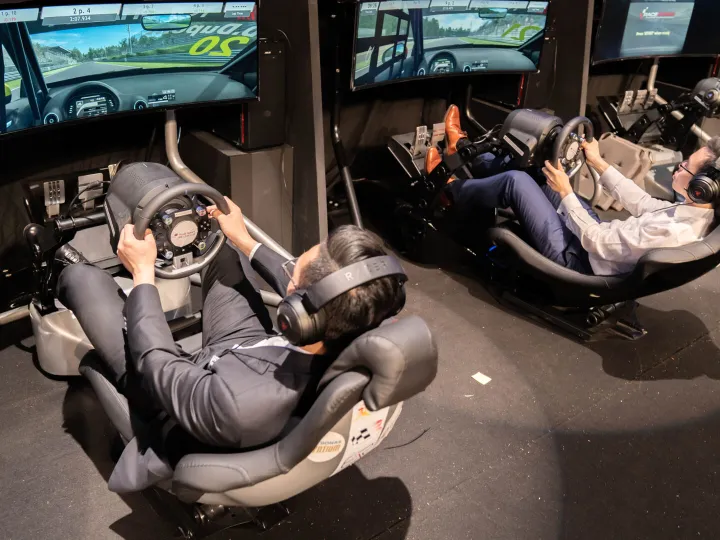Why Motion Matters in Sim Racing
The rise and rise of motion platforms
There was a time when sim racing was a fairly rudimentary affair. Flat monitors, plastic steering wheels, and limited feedback systems meant that most of the immersive experience came from imagination. Fast forward a decade, and the landscape has undergone a dramatic transformation.
One of the most profound shifts in this evolution has been the emergence of motion platforms – rigs that replicate the sensation of driving by physically moving in response to the simulation. These systems have injected a visceral realism into virtual racing that no amount of graphical fidelity can achieve on its own. For the enthusiast with a taste for authenticity, motion adds the missing dimension.
Understanding motion platform technology
At the heart of any motion sim rig lies a sophisticated interplay between software and hardware. Motion platforms interpret telemetry data from the racing simulation, everything from acceleration forces to road texture, and convert it into physical movement. There are two dominant mechanical configurations in use: actuated platforms and gimbal-style rigs. Actuated platforms typically use linear actuators to create movement in multiple degrees of freedom that mimics pitch, roll, heave, and sometimes yaw.
Gimbal systems, by contrast, frequently rotate around pivot points and are more commonly found in aviation simulators, though a few have been adapted for use in driving. For sim racing, the most frequently implemented setup is the three degrees of freedom (3 DOF) model, which includes pitch, roll, and heave, providing enough motion fidelity to convincingly replicate braking, cornering, and acceleration dynamics without overwhelming the user.
Software integration and tuning
The magic of motion is not purely mechanical. Software plays a crucial role in synchronising the rig with the game engine. Middleware, such as SimTools, FlyPT Mover, and proprietary solutions like Next Level Racing's Platform Manager or D-Box's Motion Core, provides the interface between the simulator and the motion platform. These tools interpret the physics data output by the sim and translate it into precise movement commands. Fine-tuning is critical.
Raw telemetry can produce violent, disorienting motion unless it is carefully scaled and filtered. Most motion software allows for extensive configuration, letting users tailor the rig's behaviour for different cars and tracks. The aim is not to shake the driver like a maraca but to subtly enhance the illusion of weight transfer, suspension dynamics, and road feedback. Done right, the rig disappears and the car comes alive.
Cost, complexity and practicalities
As with most serious sim racing gear, motion platforms are not cheap. Entry-level systems with two actuators typically start around £2,000, while fully-featured, high-torque, four-actuator systems can easily exceed £10,000. Then there is the support structure: these platforms are heavy and require a rigid frame, stable flooring, and a powerful PC to handle the added processing load. Noise can also be an issue, particularly in residential environments, where electric actuators produce a distinct whine under strain.
But the learning curve extends beyond installation. Understanding how to calibrate motion output for each simulation, such as iRacing, Assetto Corsa Competizione, rFactor 2, and others, can be daunting. Yet for many, this technical complexity is part of the appeal. It mirrors the meticulous car setup process in real-world racing, rewarding those willing to tinker and tweak.
Does motion make you faster?
This is the question that often divides the sim racing community. Some purists argue that motion can introduce lag or act as a distraction, particularly in competitive online environments where consistency and precision are paramount. Others believe that, when correctly configured, motion helps reinforce muscle memory and spatial awareness, especially under heavy braking or during oversteer corrections.
It is undoubtedly true that motion benefits immersion more than outright lap time. The rig won't drive the car for you, but it may help you feel it more clearly. For training purposes, particularly for professional drivers or track-day enthusiasts looking to sharpen their instincts, motion feedback can be a valuable tool. For the average sim racer, it is less about performance and more about deepening the emotional connection with the car and track. And for some, that is worth every penny.
About Us
Race@home launched in 2020, offering immediate shipment of high-end sim hardware to frustrated customers. Our acclaimed LowRider 5DOF and new LowSlider 6DOF platforms prioritise compact excellence.
Contact Us
raceathome@gmail.com
+441163326679
Leicester, United Kingdom
WhatsApp
Instagram
Facebook
TrustPilot
YouTube

